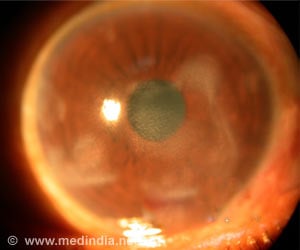A strategy using nanoparticles to encapsulate a commonly used corticosteroid, which could improve the success rate of corneal transplants has been developed by researchers.
- Nanoparticles containing dexamethasone sodium phosphate could improve corneal transplant success rates
- The drug is released slowly and specifically where needed, requiring fewer doses than current eyedrop treatment
- The technique has shown to have superior efficacy and safety profiles in preclinical corneal transplant rejection models
Burden of Eyedrop Dosage on Corneal Transplant Patients
Rejection rates for corneal grafts, on the other hand, can reach 10%. It is mostly owing to poor patient adherence to the treatments, which necessitate numerous administrations of topical eyedrops over time. This becomes more serious when individuals exhibit early signs of rejection of the transplanted corneas. When this happens, patients must use topical eyedrops hourly to keep the corneal grafts from failing.The time-consuming process of eyedrop dosage places a significant load on patients. Noncompliance with medical treatment may result in even greater graft rejection rates.
Use of Nanoparticles to Encapsulate a Commonly Used Corticosteroid
The use of nanoparticles to encapsulate the drug in research done by a team at Virginia Commonwealth University may improve the success rate of corneal grafts. According to a paper published recently in Science Advances titled "Six-month successful therapy of corneal graft rejection," the unique strategy could greatly enhance patient compliance.Advantages of the Nanoparticle Technique Over Current Eyedrop Treatment
Each nanoparticle contains a substance called dexamethasone sodium phosphate, which is one of the most regularly used corticosteroids for the treatment of ocular illnesses such as ocular inflammation, non-infectious uveitis, macular edema, and corneal neovascularization. Patients would only need one injection shortly after the corneal transplantation operation if the nanoparticles were used to control the release of the drug over time. According to our research, employing this strategy, the medicine retains its potency for six months on a corneal graft rejection model.Furthermore, because the medicine is given slowly and specifically where it is needed, the technique requires many fewer doses than current routine eyedrop treatment while having superior efficacy and safety profiles.
Qingguo Xu, D.Phil., associate professor of pharmaceutics and ophthalmology at VCU School of Pharmacy, worked with Justin Hanes, Ph.D., Lewis J. Ort professor of ophthalmology at Johns Hopkins University, as the project's primary investigator.
"To improve patient compliance and treatment efficacy, we produced a small nanoparticle (about 200 nanometers) that in animal experiments allows the medicine to be released up to six months after a single subconjunctival injection along the eyeball," Xu said.
"In our preclinical corneal transplant rejection model, the single dose of the nanoparticle successfully avoided corneal graft rejection for six months," said Tuo Meng, Ph.D., who worked on the project as a doctoral student at VCU and is the primary author of this paper.
Most crucially, the nanoparticle method reversed signals of early rejection and kept corneal grafts viable for six months.
Source-Medindia










